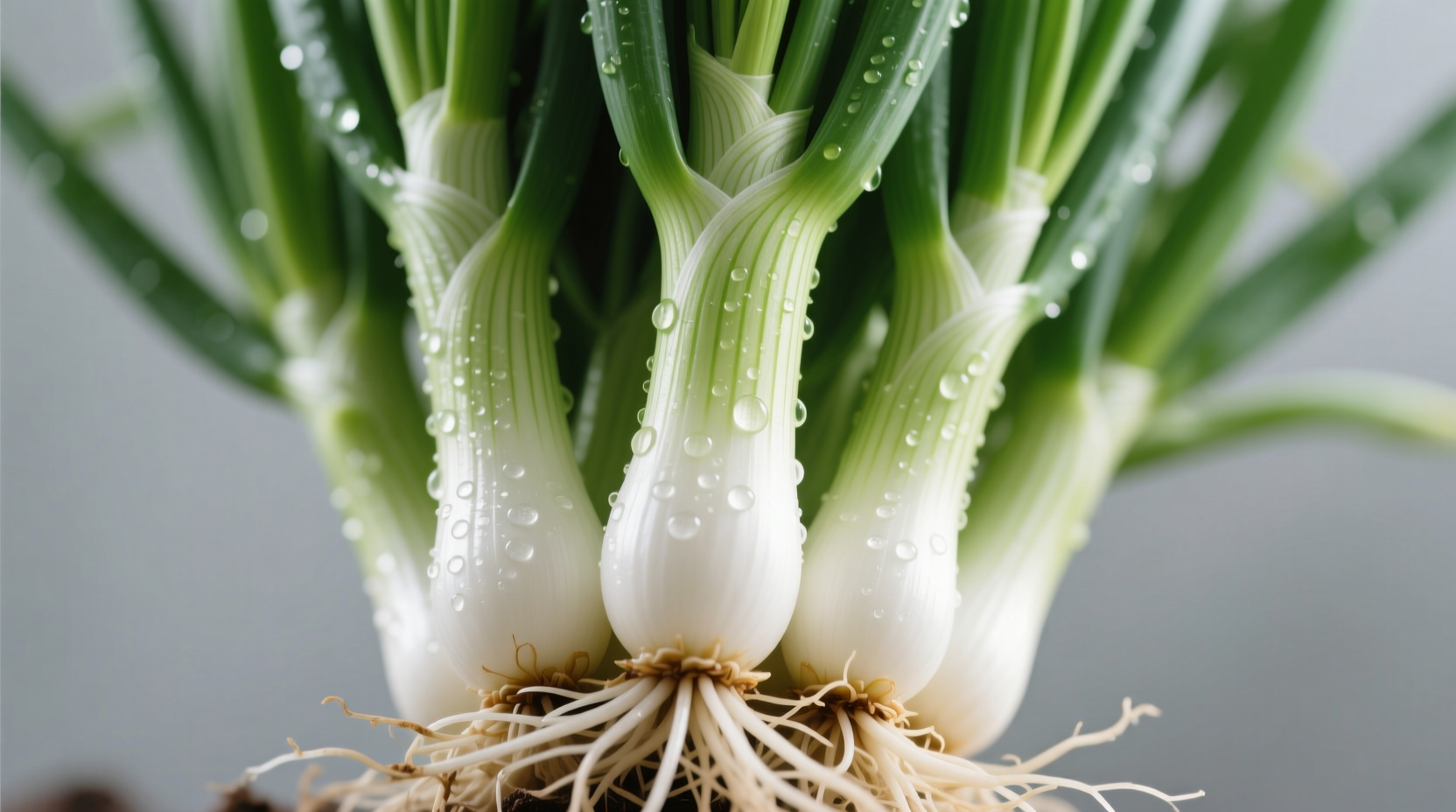Green onion bulbs are the white, rounded base of scallions that pack a stronger, more pungent flavor than the green tops. These versatile kitchen staples can be used raw in salads, sautéed as an aromatic base, or regrown from scraps for continuous harvest. Properly stored, they maintain freshness for 10-14 days in the refrigerator and contain higher concentrations of beneficial sulfur compounds than the green portions.
Discover exactly how to maximize these culinary gems—from professional chef techniques to science-backed storage methods that preserve their unique flavor profile and nutritional benefits. Whether you're a home cook looking to reduce food waste or a gardening enthusiast wanting to grow your own supply, this guide delivers actionable insights you can implement immediately.
What Makes Green Onion Bulbs Different From Regular Scallions
Many home cooks mistakenly treat green onions as a single uniform ingredient, but the bulb (white portion) and greens serve distinct culinary purposes. The bulb contains a higher concentration of allicin and other sulfur compounds, giving it a sharper, more complex flavor profile that transforms when cooked.
| Characteristic | Green Onion Bulb | Green Onion Tops |
|---|---|---|
| Flavor Intensity | Strong, pungent, slightly sweet when cooked | Milder, grassy, fresh |
| Texture | Firm, crisp when raw; becomes tender when cooked | Delicate, softens quickly |
| Best Cooking Methods | Sautéing, roasting, grilling | Raw garnish, quick stir-fry addition |
| Nutritional Advantage | Higher sulfur compounds, vitamin C | More chlorophyll, vitamin K |
According to USDA agricultural research, the bulb portion contains approximately 30% more organosulfur compounds than the green sections, which explains its more robust flavor and greater health benefits when consumed raw (USDA Agricultural Research Service).
Professional Selection and Storage Techniques
Choosing quality green onion bulbs starts with visual inspection. Look for firm, crisp bulbs without soft spots or discoloration. The transition zone between white and green should be distinct—a fuzzy boundary indicates age. Professional chefs recommend purchasing scallions with bulbs measuring 1-1.5 inches in diameter for optimal flavor balance.
For maximum freshness retention, store green onion bulbs using this chef-approved method:
- Trim roots to 1/4 inch without damaging the bulb base
- Place upright in a glass with 1 inch of water
- Cover loosely with a plastic bag
- Store in refrigerator crisper drawer
- Change water every 2 days
This technique maintains cellular integrity by mimicking growing conditions. Research from the University of California Cooperative Extension confirms that proper humidity control (90-95%) extends shelf life by 40% compared to standard plastic bag storage (UCCE Postharvest Technology Center).
Culinary Applications That Highlight the Bulb's Unique Qualities
The green onion bulb shines when treated as a foundational aromatic rather than just a garnish. Professional chefs employ these techniques to maximize flavor extraction:
- Dry-toasting before chopping releases volatile compounds that create deeper flavor complexity
- Cooking in fat at 275°F (135°C) optimizes the Maillard reaction without burning
- Adding to vinaigrettes provides subtle heat without overwhelming acidity
For Asian cuisine applications, the bulb works particularly well in:
- Scallion oil (use only bulbs for more intense flavor)
- Dim sum fillings (finely minced bulbs add texture)
- Stir-fry foundations (cook 30 seconds before adding protein)

Regrowing Green Onions: A Sustainable Kitchen Practice
Transform kitchen scraps into a continuous harvest with this simple regrowth method. The bulb's meristem tissue remains active even after separation from the plant, allowing for multiple harvests.
| Regrowth Stage | Timeline | Expected Results |
|---|---|---|
| Initial water placement | Day 0 | Cut bulb base with 1/2 inch roots |
| First root development | Days 2-3 | New white roots emerge from base |
| First green growth | Days 5-7 | 1-2 inches of new green shoots |
| First harvest | Days 10-14 | Cut greens 2 inches above bulb |
| Continuous production | Ongoing | Harvest every 7-10 days for 3-4 cycles |
This regrowth method works because Allium fistulosum (the scientific name for green onions) maintains active meristematic tissue in the bulb base. Cornell University's horticulture department confirms that properly maintained regrown scallions retain 85-90% of their original nutritional profile through three harvest cycles (Cornell Horticulture).
Common Mistakes to Avoid With Green Onion Bulbs
Even experienced cooks make these critical errors that compromise flavor and texture:
- Discarding the entire white portion - The lower 1/3 contains the most concentrated flavor
- Adding bulbs too late in cooking - They need 2-3 minutes to develop flavor properly
- Storing with greens attached - Moisture transfer accelerates spoilage
- Using dull knives - Crushes cells and releases bitter compounds
For optimal results, always use a sharp chef's knife and cut against the grain of the bulb's concentric layers. This technique preserves cellular structure and prevents excessive enzyme release that creates bitterness.
Advanced Flavor Pairing Strategies
Understanding the chemical composition of green onion bulbs unlocks sophisticated pairing possibilities. Their sulfur compounds interact uniquely with different ingredients:
- With acidic ingredients - The pungency transforms into sweet complexity (try with rice vinegar)
- With dairy - Fat molecules bind with sulfur compounds, mellowing the sharpness
- With mushrooms - Creates synergistic umami enhancement through glutamate interaction
Professional chefs often create flavor layering by:
- Sautéing bulbs in oil first to establish flavor base
- Adding acidic components mid-cooking to balance pungency
- Finishing with raw minced bulb for aromatic complexity
This three-stage approach maximizes the bulb's flavor potential across cooking temperatures, creating dishes with remarkable depth that simpler techniques cannot achieve.











 浙公网安备
33010002000092号
浙公网安备
33010002000092号 浙B2-20120091-4
浙B2-20120091-4